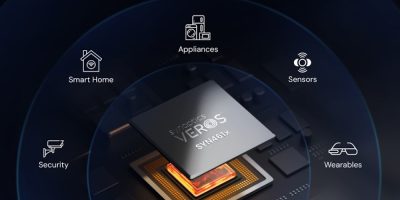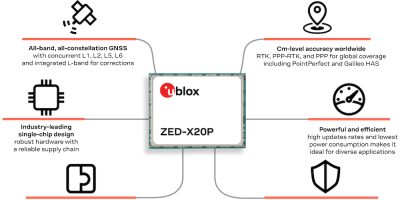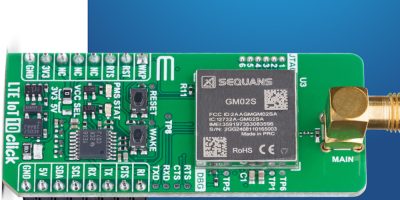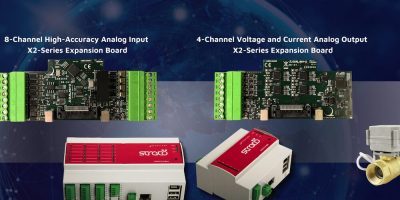Synaptics has extended its Veros Triple Combo connectivity portfolio with the SYN461x family of ultra-low-power (ULP) Wi-Fi 2.4/5/6 GHz, Bluetooth 6.0 and Bluetooth Low Energy (BLE), and IEEE 802.15.4 (Zigbee/Thread) systems on chip (SoCs). Designed for the embedded Edge AI Internet of Things (IoT), the SYN461x is optimised for power, system integration, size, and rapid time to market while delivering rate-over-range performance and seamless interoperability. The versatile Matter-compliant SoCs offer advanced Bluetooth features, such as Channel Sounding and LE Audio—including Auracast. The SYN461x specifically targets consumer and industrial applications and is tailored for devices such as wearables, smart watches, audio speakers and headsets, home appliances, security cameras, asset trackers, and factory automation.
Launched in 2024, Veros encompasses Synaptics’ entire wireless portfolio of solutions characterised by performance, interoperability, coexistence, power efficiency, and bill of materials integration. Veros features built-in support for Synaptics Astra, the AI-Native compute platform for the IoT.
“The SYN461x family is a breakthrough addition to our Veros portfolio,” said Vineet Ganju, VP of Wireless Product Marketing at Synaptics. “The SoCs are our first in a series designed from the ground up for ULP embedded Edge AI IoT applications. We believe their low-power architecture, software support, and low-density packaging extend our broad-market reach and position us to share in a ~$3.2 billion market opportunity.
“The degree of versatility required to meet the unique connectivity needs of the diaspora of diverse low-power IoT applications demands a high degree of domain expertise,” said Phil Solis, Research Director at IDC. “Ultra-low-power and highly flexible solutions such as the SYN461x make a solid case for discrete, targeted, wireless SoCs in markets where more options are needed.”
The SYN461x family extends Synaptics’ Triple Combo series into ULP, highly optimised IoT applications where it delivers reliable connectivity of up to 50 Mbps while extending battery life and maximising range. Features include:
● Up to tri-band 1×1 Wi-Fi support across 2.4, 5, and 6 GHz with power-optimised architecture
● Low-power Bluetooth/BLE—with Channel Sounding for precise distance measurement
● IEEE 802.15.4 (Thread/Zigbee) with Matter support for seamless interoperability across popular low-power networks
● Integrated Tx/Rx switch, LNAs, and PAs that reduce area BOM and system cost while simplifying design by only requiring a direct antenna connection
● Low-pin-count WLBGA package option for low-cost, plated-through-hole (PTH) PCBs (25% reduction in typical board cost)
● An integrated processor that offloads the host application processor to help minimise system power consumption
● Secure Boot to help ensure system integrity







